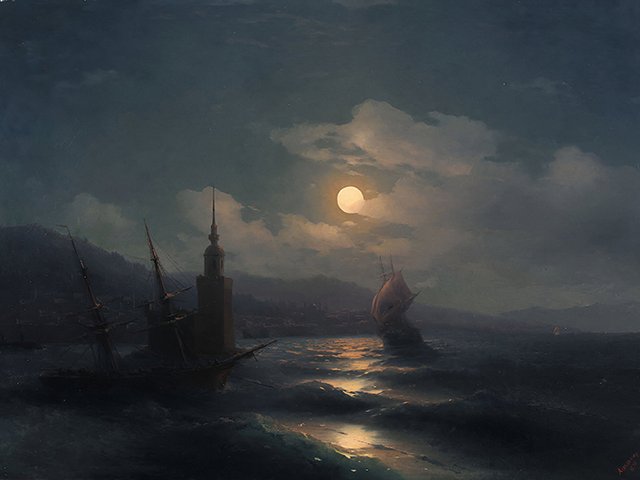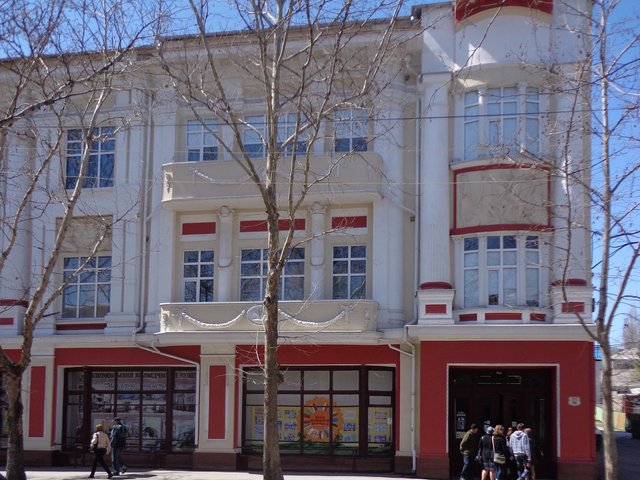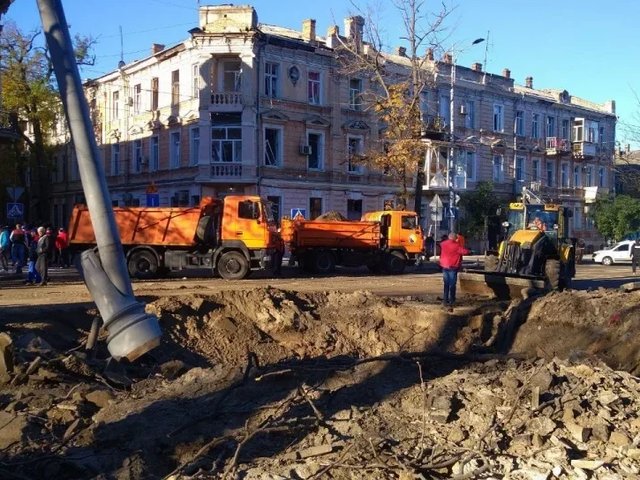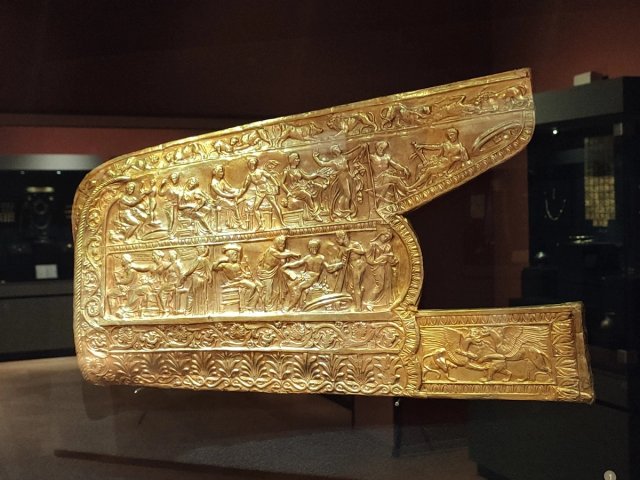In 2020 the Mariupol Local History Museum in eastern Ukraine was celebrating its centenary. Oleksandr Hore, who oversaw its educational programmes, appeared on local television in July that year with Natalia Kapustnikova, then the museum’s director.
It was typical morning show fare: bright smiles, friendly hosts and a breezy 20-minute chat about the museum’s exhibition on the history of fishing in Mariupol, an industrial city on the coast of the Azov Sea. The hosts asked questions in Ukrainian; Hore and Kapustnikova, sitting side by side, answered in Russian.
Flash forward two years to February 2022 and Russia’s full-scale invasion of Ukraine. Following relentless Russian bombing and shelling, street fighting and the siege of the Azovstal factory, Mariupol was illegally annexed as part of the Donetsk region, one of four Ukrainian territories that Russia claimed.
Hore escaped Mariupol that spring to Odesa, a cosmopolitan Ukrainian Black Sea port also coveted by the Russian president, Vladimir Putin. “I did not want to live under the occupation,” he says. He managed to get a laptop containing information about the museum’s collection past the Russian checks of Ukrainians leaving Mariupol—for the simple reason that the battery had died, he says.
But Kapustnikova stayed.
In April 2022, Russian media footage showed her helping Russian officials appropriate works from the museum by the 19th-century, Mariupol-born Greek artist Arkhip Kuindzhi, whom Russia claims as its own. She blamed Ukrainian forces for destroying the museum. She is now subject to European Union and Canadian sanctions.
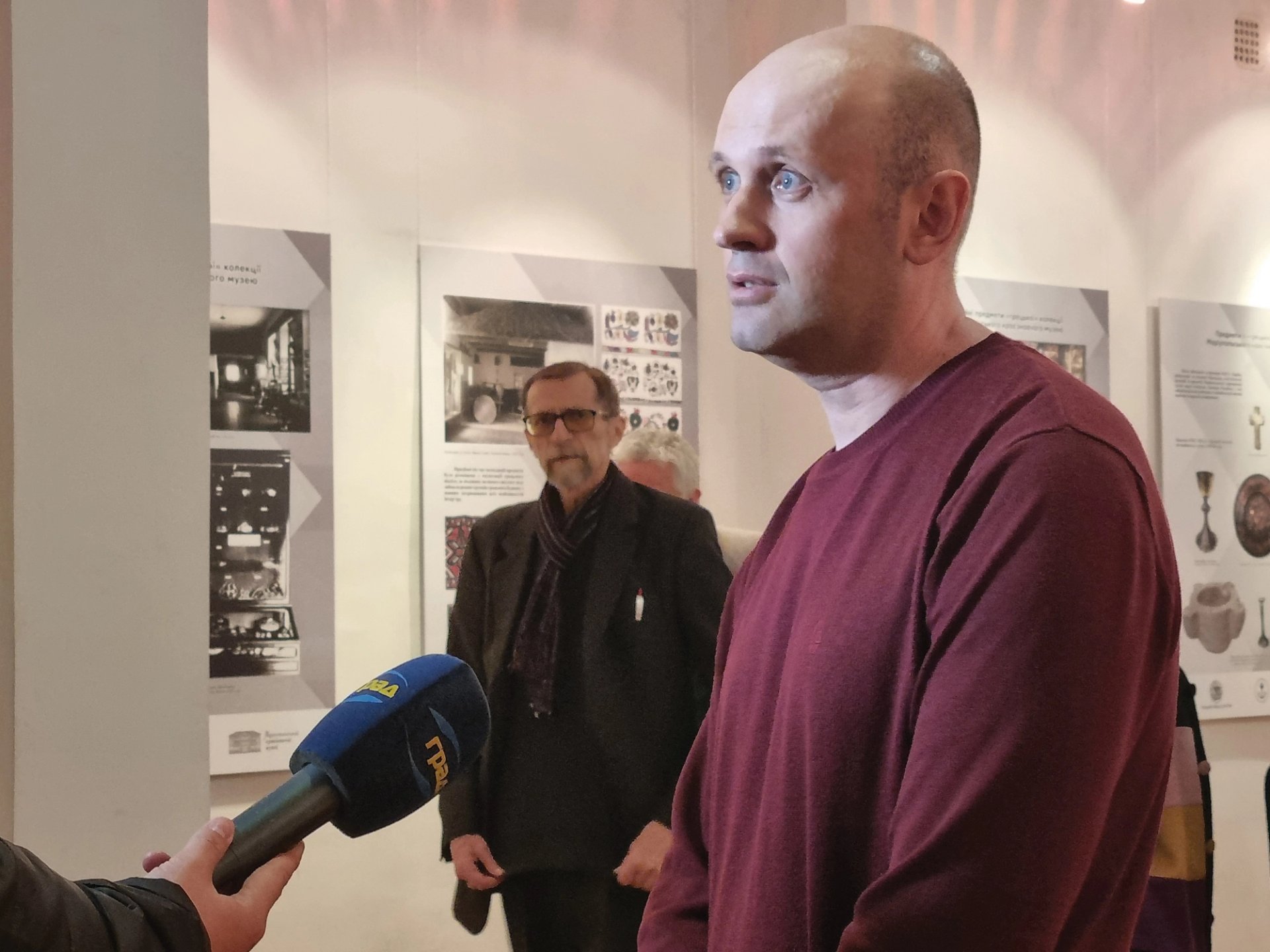
Oleksandr Hore in October 2022, discussing an exhibition he organised in Odesa on Mariupol’s Greek connections Courtesy of Oleksandr Hore
The EU says that she “gave those works willingly over to the Russian authorities, who facilitated their transfer to the Local History Museum of Donetsk… without the knowledge or consent of the Ukrainian authorities”. It describes her as “supporting and implementing actions and policies which undermine and threaten the territorial integrity, sovereignty and independence of Ukraine”.
Hore says that the 2020 television show was one of the last times he spoke Russian in an official interview. Kapustnikova and some other staffers, he says, did not like speaking Ukrainian. “We constantly argued about this,” he says. They last saw each other in April 2022 and spoke by phone once in May of that year.
Of the museum’s three branches, the Kuindzhi Art Museum and the main building were the most severely damaged. The main building was hit multiple times. “There is a large crater in the yard,” Hore says.
With a collection of nearly 60,000 items, the museum was a “unique and vibrant” place, Hore tells The Art Newspaper via Zoom, periodically interrupted by power cuts caused by Russian missile strikes. “It was indeed a classic local history museum.”
Though fluent in Russian, Hore, who was born in Mariupol, identifies as Ukrainian. Ukraine now officially recognises him as the Mariupol museum’s acting director.
One museum, two directors
Meanwhile, Russia has appointed its own director of the museum to succeed Kapustnikova, who now works for a Russian organisation that creates propaganda exhibitions. The new Russian appointee, Raisa Bozhko, who is also sanctioned by Canada, recently signed a co-operation agreement with the Central Museum of the National Guard of the Russian Federation “with the goal of popularising the history of Russia”, according to a post on the Russian social media platform VK.
Hore is devoted to rebuilding, remotely for now, the institution where he has worked since 2000—his entire professional life. The Mariupol Local History Museum’s inventory was not fully digitised and, using a partial photographic inventory, he is working on a catalogue, largely to document the museum’s losses. Like other Ukrainian museum directors, he tracks Russian propaganda for evidence of looting.
“Our museum is the oldest in the region,” Hore says. “We expected only good things in its development. It was hard to predict what happened, although the subtext was there.”
Russian-fuelled fighting had already broken out in Mariupol in 2014, following the Maidan Revolution in Kyiv. The museum’s folklife branch was caught in the crossfire. “We were there, and saved the collection,” Hore says.
But the 2022 invasion unfolded so quickly and brutally “that we weren’t able to take even part of the collection out”, he says. Mariupol was too far east for authorities in Kyiv, themselves under assault, to act quickly enough.
In Odesa, Hore used the hard-drive data on the laptop he had smuggled out of Mariupol to create an exhibition about the city’s Greek ties, financed and hosted by the Hellenic Foundation for Culture in November 2022. It has toured Ukraine.
Mariupol’s Greek population, from Crimea, “have their own unique culture and traditions”, he says—one of the focuses of the Local History Museum. It had a Greek department with a rich collection of objects and documentation of folklore and songs. “Many were lost and some are unaccounted for.”
Hore is also continuing a partnership with the University of St. Andrews in Scotland and the Lviv Center for Urban History, near Ukraine’s border with Poland, which addresses Mariupol’s industrial heritage.
So much has been destroyed. It is the heritage of those who worked for nearly 100 years on collecting, studying, researchingOleksandr Hore, Mariupol Local History Museum
When he first left Mariupol, “it was very hard to reflect”, Hore says. Now, he says, he has processed the losses. “So much has been destroyed,” he says. “It is the heritage of those who worked for nearly 100 years on collecting, studying, researching. It is not just one life; it is many generations of people who worked there.”
Determined to convey optimism, Hore points out that Mariupol “rose up from ruins after the Second World War”. New technology, new ideas and a new approach will allow the institution to flourish once again, he believes, once the city is liberated.
“We will have to find means to express emotions and ideas, maybe using a more complicated language beyond just showing an object”, to relate history, he says. He looks back to the museum’s founding a century ago for inspiration.
“People then didn’t see obstacles,” Hore says. “They didn’t have much money. But they dreamed and brought ideas to life.”



